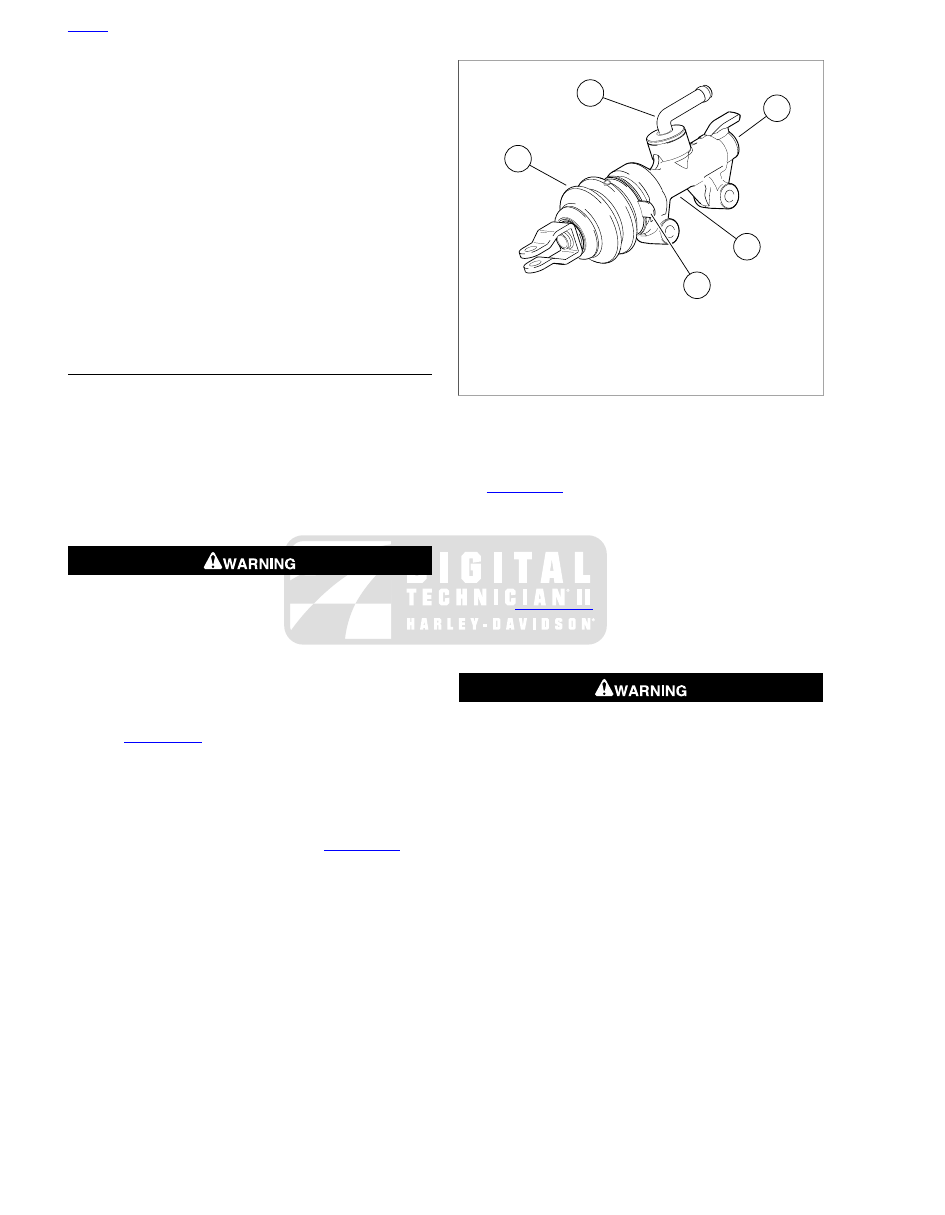Harley Davidson Sportster Models 2009. Service Repair Manual - page 22

passages and piston bore in master cylinder body with
low pressure compressed air from a clean air supply. Do
not use a wire or similar instrument to clean drilled pas-
sages.
2.
Carefully inspect all parts for wear or damage and replace
as necessary.
a.
Inspect piston bore in master cylinder housing for
scratches, grooves, scoring, pitting or corrosion.
Replace housing if any of these conditions are found.
b.
Inspect outlet port that mates with brake line banjo
fitting. This is a critical sealing surface. Replace
housing if any scratches, dents or other damage is
found.
3.
Verify that vent holes in master cylinder are completely
open and free of dirt or debris.
ASSEMBLY
NOTES
•
When assembling rear brake master cylinder, always use
new parts from the service parts kit. Consult the PARTS
CATALOG for the correct kit part number.
•
CCI #20 BRAKE GREASE is recommended for lubrication
of cylinder bore, cups and seals prior to assembly.
•
Stand master cylinder on wooden block or clean, lint-free
towel to protect seating surfaces.
Wear safety glasses or goggles when removing or
installing retaining rings. Retaining rings can slip from the
pliers and could be propelled with enough force to cause
serious eye injury. (00312a)
NOTE
Use correct retaining ring pliers and correct tips. Verify that
tips are not excessively worn or damaged.
1.
. Coat new o-ring (20) with HARLEY-
DAVIDSON D.O.T. 4 BRAKE FLUID. Install o-ring and
feed port fitting (21) into feed port on top of master cylinder
(19). Secure with new retaining ring (22). Verify that
retaining ring is fully seated in groove.
2.
Slide dust cover (23) onto feed port fitting and press into
place in master cylinder feed port. See
. Turn
feed port fitting (4) so it points toward banjo fitting (5) end
of master cylinder body (1).
2
4
5
1
3
sm01809
1.
Rear master cylinder assembly
2.
External boot
3.
Tabs (2)
4.
Feed port fitting
5.
Banjo fitting hole
Figure 2-106. Assembled Rear Master Cylinder
NOTE
See
. Clamp rear brake master cylinder (19) in a
vise by its mounting bosses (18) only. Use brass jaw covers
or other protective device on vise jaws to prevent damage to
master cylinder.
3.
Clamp master cylinder in a vise with banjo fitting end
pointing down.
4.
. Lubricate master cylinder bore, new
piston (1) with new secondary cup (3), and new primary
cup (2) with CCI #20 BRAKE GREASE supplied in the
service parts kit.
Wear safety glasses or goggles when removing or
installing spring. Spring tension can cause spring,
attached components and/or hand tools to fly out which
could result in death or serious injury. (00477c)
5.
Press small end of new piston spring (4) onto mounting
boss (8) on piston (1).
2-70 2009 Sportster Service: Chassis